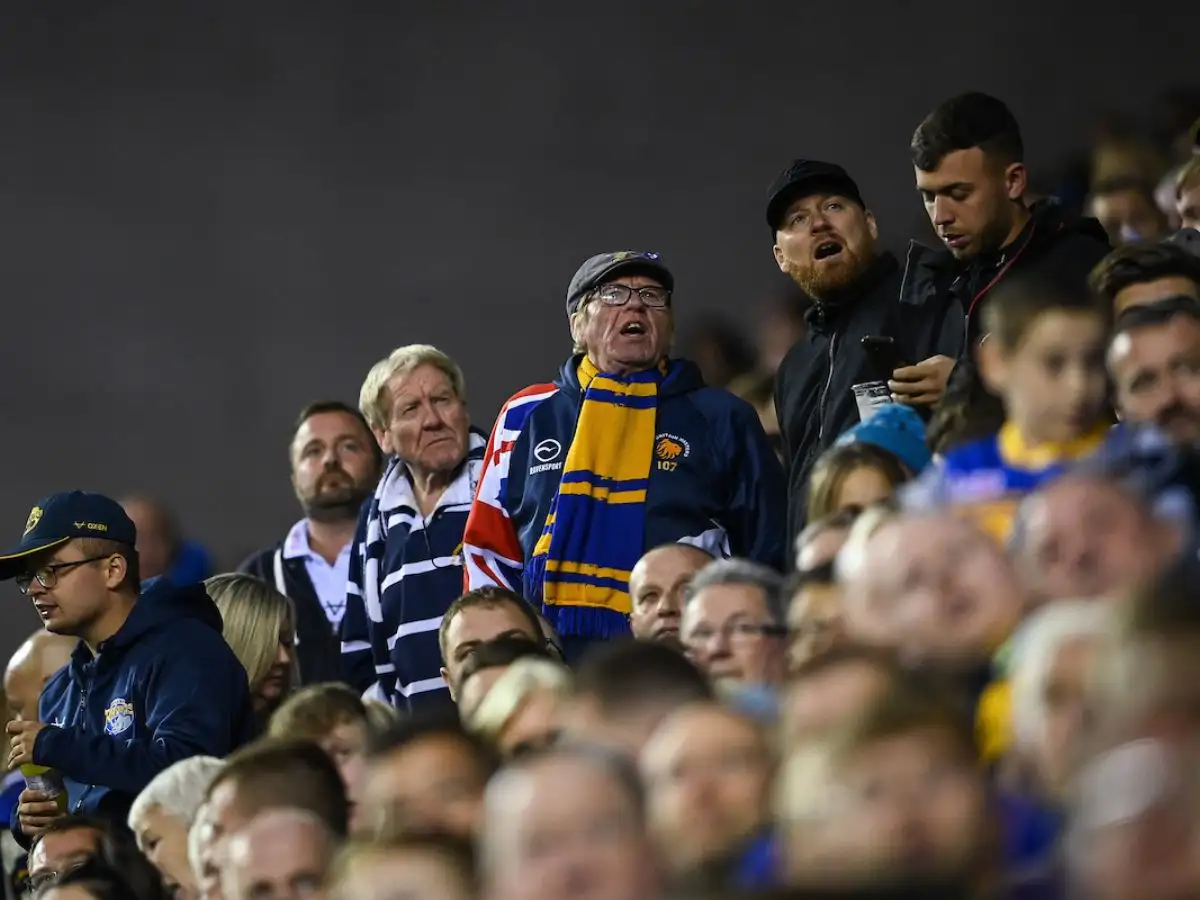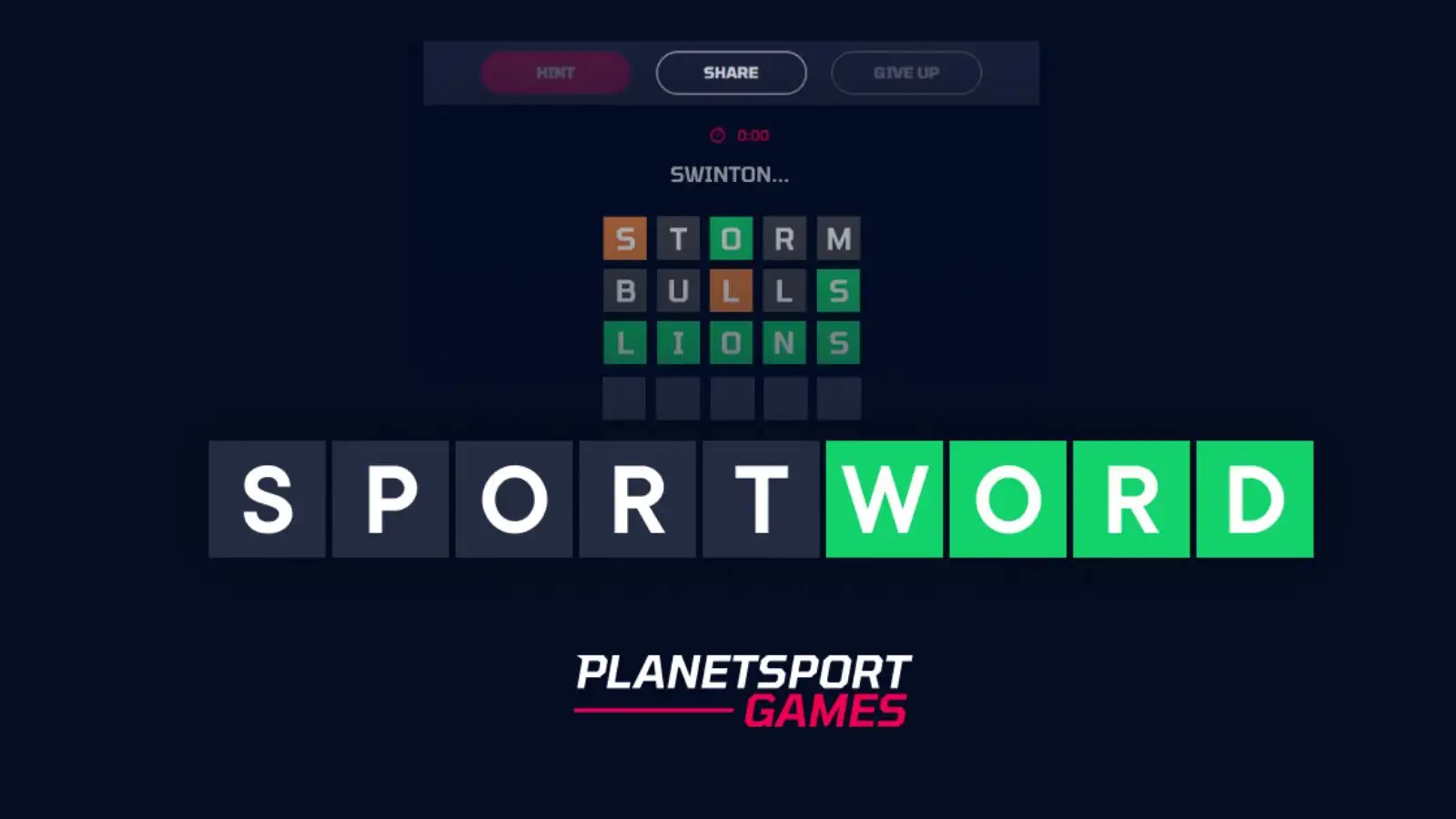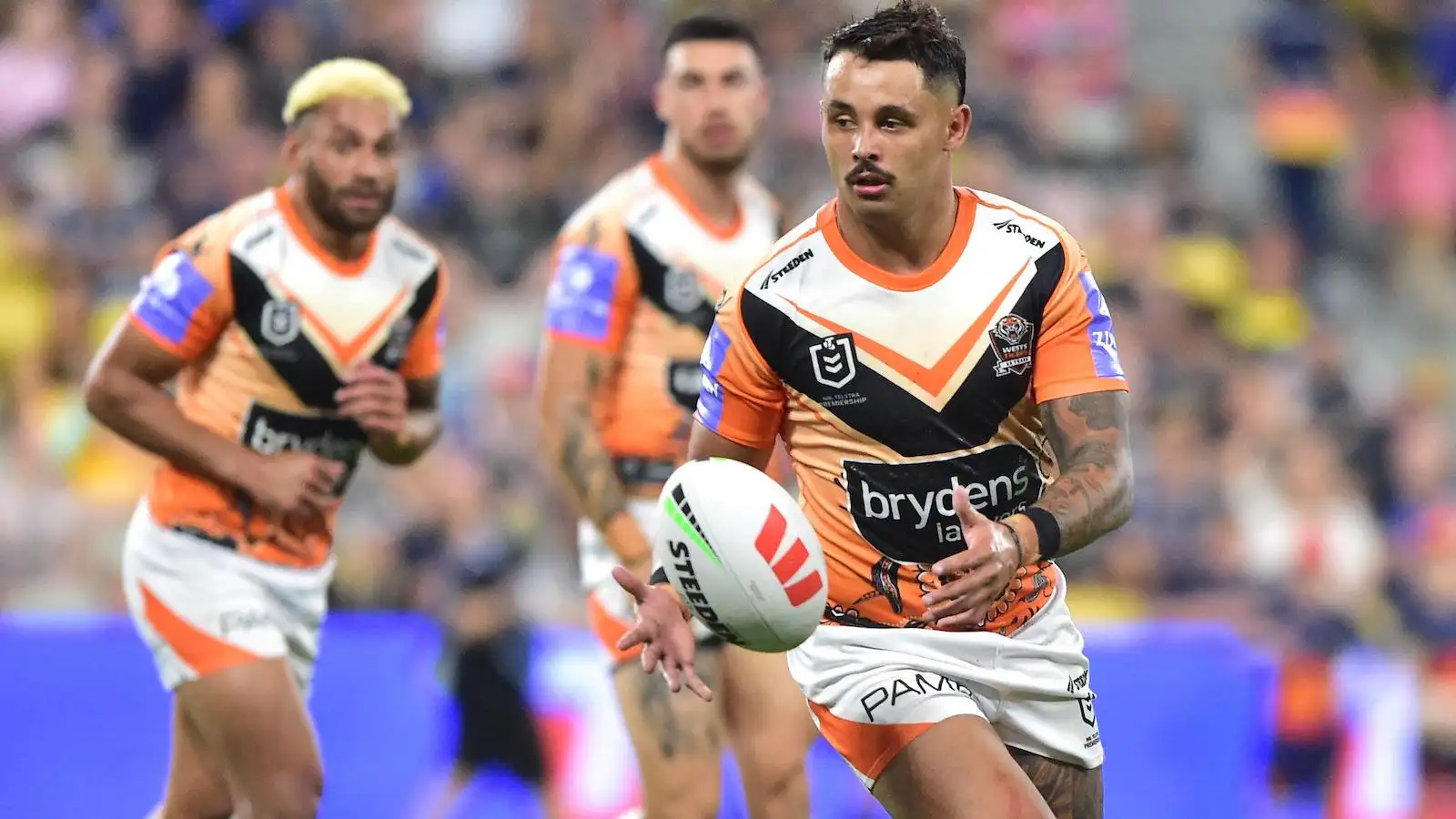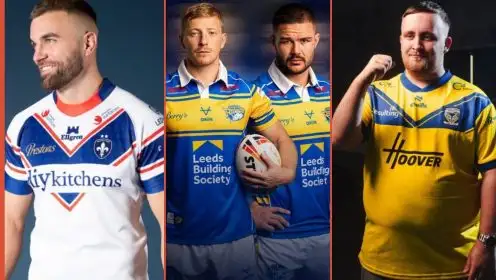Will IMG succeed where others have failed since the 1970s?

Photo: News Images
2022 was the year that IMG arrived to “reimagine” the rugby league landscape in Britain. But you’d be forgiven for thinking that we have been here before.
Just over 50 years ago, in the autumn of 1971, British rugby league clubs were waiting to hear back from a consultation that they believed would finally “establish the game on a national basis”.
After a decade of decline in the 1960s, administrators had tasked John Caine Associates of Manchester with the job of turning the game’s fortunes around.
While it was perhaps an unusual step for a sport, it came from a position of weakness. Those at the top of the RFL admitted that they themselves no longer had the answers. “We try hard,” said long-serving RFL Secretary Bill Fallowfield. “But your guess is as good as mine as to why the bloody public doesn’t come”.
Caine Associates agreed to a £3,000 a year consultancy with the rugby league and began by sending a survey out to club owners to gather their opinions.
In the media, there was great anticipation about what Caine could deliver. The main trade paper, the Rugby Leaguer, threw its weight behind the researchers, urging them to imagine selling the game as if it were a loaf of bread. The modern supporter was affluent, owned a car, and had “the wife nagging him to go shopping” each weekend. Therefore, the sport would need to offer much “more than a splinter-ridden seat and a clinker terrace to draw him to the match”.
The Manchester Wizkid
Quickly dubbed the “Manchester Wizkid” by his supporters in the media, Caine was soon frustrated by the “inexplicable reluctance” of Bill Fallowfield to answer letters on the “important matters”.
Without guidance from the top Caine had free rein to develop a set of radical proposals to change the face of the sport. And when he presented the findings to the RL Council, he refused to hold back his criticisms for the failure of leadership.
Caine began by unpicking the dwindling media profile, which he blamed on the leadership’s lack of resources and urgency.
“It is not sufficient for the press and others to be told that they were too busy to answer telephone calls”. The sport had little support from friends at the BBC either. “The direction of the cameras and overall style of the programme” promoted a sense of “slag heap and drizzle” every time a viewer tuned in.
Sponsorship strategies

On the sponsorship issue, fast becoming the dominant focus for governing bodies, the report concluded that others were already at an advantage because of how rugby league clubs failed to put together a coherent strategy.
Caine observed that the game needed to unite and create a body to gain mass deals, “rather than as individual clubs, to act as a unified body in increasing sponsorship”.
On a practical level, the report gave the sport a set of policies that could turn its fortunes around. Caine recommended that the clubs streamline, create a smaller governing body and appoint an outside Chairman to manage the game’s affairs.
In addition, the report recommended creating a new two-division structure as well as converting rugby league to a Sunday sport to separate it from football. To reverse the slow-paced nature of the game, he proposed reducing the number of players on the pitch to eleven to promote attacking play.
Without mass changes, the game was unlikely to survive. The report claimed that the “single-minded, loyal supporter” was “rapidly disappearing” and that the only way the game could survive into the 1980s would be to appeal to the “better-off, more mobile, more sophisticated and consequently more discriminating generation”.
It was a radical proposal to change the trajectory of rugby league in Britain. And despite the report’s recommendation to reduce the power of the RL Council, the members accepted the findings and promised to support the implementation of the results. But it never happened.
Worldwide media attention

Buried in the thirty-page report was a controversial half-page criticism which would draw worldwide media attention and scupper Caine’s plans to change the game. The report concluded that the country’s most famous rugby league figure, Eddie Waring, was seriously holding the game back. He was judged to have “little credibility as a serious interpreter of the game.” While he may be “immensely entertaining and amusing”, the “laughter is patronising, and lends support to the view of rugby league held by midland and southern watchers”.
It was this criticism that drew national media attention. The day after publication the BBC and Eddie Waring called a press conference in Manchester where he defended himself and threatened to take legal action against the game. “I tell the truth about a particular image. I am using the language of the north of England,” he said. A media storm ensued, with newspapers running polls on whether Waring should be replaced. In his Sunday Times column, Michael Parkinson launched a defence of a game which is “played in some of our unlovliest northern industrial towns”. He concluded that the consultants didn’t understand the game and could have learned more about league by having a pint with him in Barnsley instead.
And there was evidence that Caine Associates had indeed picked the wrong battle. When the Daily Mail ran a straw poll on whether he should stay or go, they found that 67% of southern readers enjoyed his commentary. The Daily Mirror – where he worked as a columnist – printed letters from supporters backing him: “Consider all your toffee-nosed sporting commentators and none bears comparison to that cheeky chappie Eddie Waring”.
RFL cuts ties with John Caine Associates
As the historian Tony Collins argues in Rugby League in the 20th Century, the Caine Report was not really about Eddie Waring but the leadership of the RFL in Bill Fallowfield. In the aftermath of the Waring controversy, Fallowfield quickly engineered a confidence vote in his leadership before Caine could deliver a follow-up report and a plan to enact the changes. While the sport did move to two divisions, the more radical aspects around the coverage and presentation of the game were ignored. Caine found that the clubs and the administrators were unwilling to support him, particularly in his battle with the BBC. In April 1972, the RL council decided it no longer wanted the consultancy involved in the game and ended the contract.
Waring remained the front man for the game for another decade before ill-health forced him to give up the microphone. It would take most of the 1980s for the game to drag itself into the professional age, through the work of David Oxley and Maurice Lindsay off the pitch and superstars such as Ellery Hanley on it. It was only in 1990, 20 years on from the Caine Report, when BSKYB began covering the game that it finally had the television coverage it had always longed for.
The introduction of IMG
Fifty years have passed since Caine tried and failed to revolutionise the game and it is now the turn of another consultancy to equip the game with the demands of a new century. The sporting landscape may have radically changed in that time, but for IMG the task is eerily similar to the one faced by Caine all those years ago. Just as the Caine Report offered a damning assessment of the Fallowfield years, there is a great expectation that IMG will provide a fresh start on the successive failings of the Nigel Wood, Robert Elstone and Ralph Rimmer era.
The two questions that hang over the game as they begin working with the clubs is how bold their ideas will be and whether the clubs intend to listen to them. Unfortunately, the history of rugby league is littered with long-term strategic plans that are rarely followed through; whether it’s from Caine’s Associates in the 1970s, Framing the Future in the 1990s or the move to licensing in the 2000s.
The task facing IMG
IMG’s experience in the sports industry has given them a hearing in a game that is desperate to be offered some new ideas and new direction. Around 20,000 supporters contributed to their survey on the game’s future which resulted in the “Reimagining Rugby League” report. And the ease at which those recommendations were approved by its member clubs shows that IMG are better at navigating the politics of rugby league than others have been in the past. A Rugby League Council meeting saw 37 of the 42 members approve the plans.
But just as there was in the 1970s, there is a hope amongst supporters that IMG will offer something much bolder over the next few months. In the week that two of Super League’s brightest and potentially most marketable prospects, Kai Pearce-Paul and Will Pryce, announced their departure to the NRL, a revival of commercial and economic fortunes must be top of IMG’s in-tray. During the World Cup, we were told that IMG were busy working behind the scenes on plans to do so. As they meet with Super League clubs, we shall soon find out whether they have the solutions and the political skills to succeed where Caine Associates failed.
By Anthony Broxton
Read more
Super League ins and outs for 2023: Signings and departures club-by-club
2023 rugby league kits including every Super League club
List of 2023 rugby league pre-season friendlies
FOLLOW: Keep up with all the latest on the Love Rugby League mobile app and podcast



